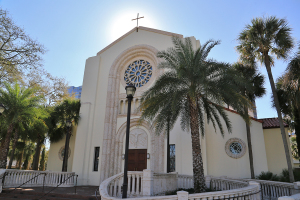Famed Index of Christian Art Attracts Visitors to University
Medieval art exhibition draws diverse attention at the Princeton University
McCormick Hall houses the largest archive of medieval art in the world. Who knew? Not many of the people who dash past it every day. Since its inception in 1917, the University's Index of Christian Art has catalogued art from second century A.D. to just before the Renaissance in 1400. With a focus on the art created for the churches of Western Europe — but with a smattering of artifacts from the Near East and Middle East — the Index documents religious art and sorts the works by theme and medium.
The ICA was founded by former chair of the department of art and archaeology Charles Rufus Morey. Since Morey's death in 1955, the ICA has catalogued, on index cards and on the Internet, about 250,000 works of art, said Colum Hourihane, director of the ICA.
"We are totally unique," Houri-hane said. "There is nothing like it in the world."
What makes the ICA so useful to scholars, Hourihane said, is how the images are sorted, illustrating that representations of religious icons change over time. For each piece of art, the ICA includes on a card the title of the piece, where it is located, a possible date for its production, a picture of the work and a description. The cards are all sorted by subject matter.
"[Morey] saw the evolution of iconography in relation to art history," Hourihane said, referring to how Adam and Eve's changing poses can reveal much about how worshipers viewed Biblical figures.
The idea for the ICA came to Morey when he wanted to organize the hundreds of pictures he had taken during his trips abroad. Before he came up with the iconographical filing system, the pictures sat on his desk in shoeboxes.
There are four copies of the ICA — Washington, D.C., Rome, Los Angeles and Ultrecht, Holland. But the "mother" ICA is in Princeton, Hourihane said. Each branch brings in 600 to 700 visitors annually. Since the launching of the website four years ago, the attendance has dipped slightly.
"There's still 80 percent that people have to come here to see," Hourihane said. Because of the increasing scholarly attention, Hourihane said, "Now we're just keeping our head above water." For example, 37,000 (and counting) cards in the ICA are representations of the crucifixion.
External financial support, in addition to its University funding, has allowed the ICA to continue its campaign to collect images. The Mellon Foundation gave $500,000 last year to fund ICA's cataloguing of the extensive collection of illuminated manuscripts in the Firestone Library.
"It's nicely filling in the holes and highlighting some of the treasures of Princeton," Hourihane said.
Groups visit the ICA from New York, Philadelphia and Washington, D.C., but "not from Princeton," Hourihane said, with the exception of students who are brought into the ICA with medieval studies classes. Hourihane said the ICA isn't used as much by locals as he would like it to be.
"It's an amazing resource," English professor Vance Smith said in an email, "but one that's probably more famous outside of Princeton — even outside this country — than it is in Princeton."
Smith, who this semester teaches MED 227: The World of the Middle Ages, found the cover art for his book through the ICA.
"The staff at ICA are amazingly knowledgeable, actually world authorities in their own fields," Smith said.
Adelaide Bennett, one of the 11 scholar-researchers on staff at the ICA, helped Smith locate the precise image for his book cover.
"She remembered that an obscure library owned by a minor count in Germany had a few pages of the gospel John that were produced in a particular workshop in England, and which she thought would have just the image I wanted," Smith said. "It did take more than a year to get the image from Germany, but that was hardly ICA's fault."
Smith said he uses the ICA website to aid his research "to look up facets of medieval culture."
The ICA website, which is the largest online database of medieval art, hosts 100 international subscribers from Spain, Israel, Italy, Japan, Germany, the Netherlands and Canada.
"You get people killing to come here," Hourihane said. "People are anxious to come here to use the resource. It's such a rich resource, and people in Princeton say, 'it'll always be there."
In addition to the internet database and the rows of card catalogue drawers, the ICA links with the art department and the museum to host scholars, publish a journal and hold conferences.
The upcoming conference is at the University and titled "Saint-Denis Revisited."
It will take place from Oct. 24 to Oct. 25.




























